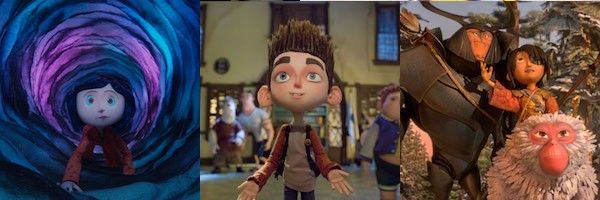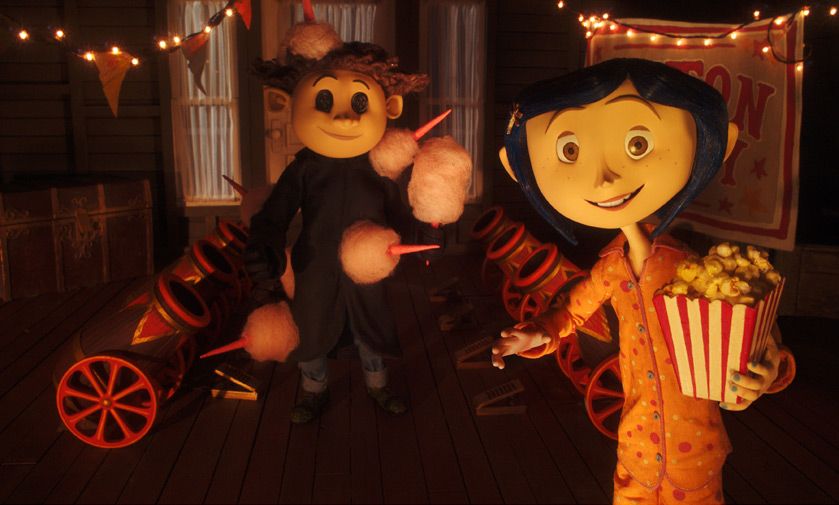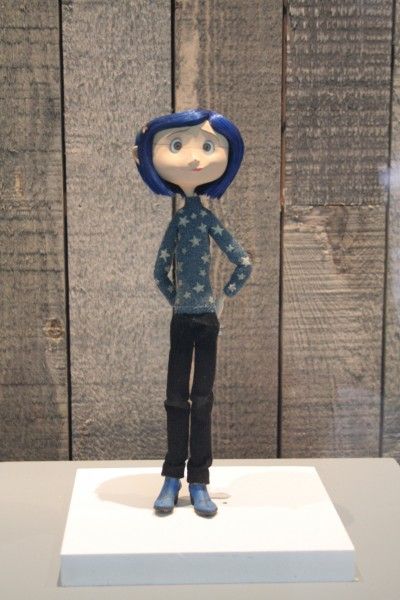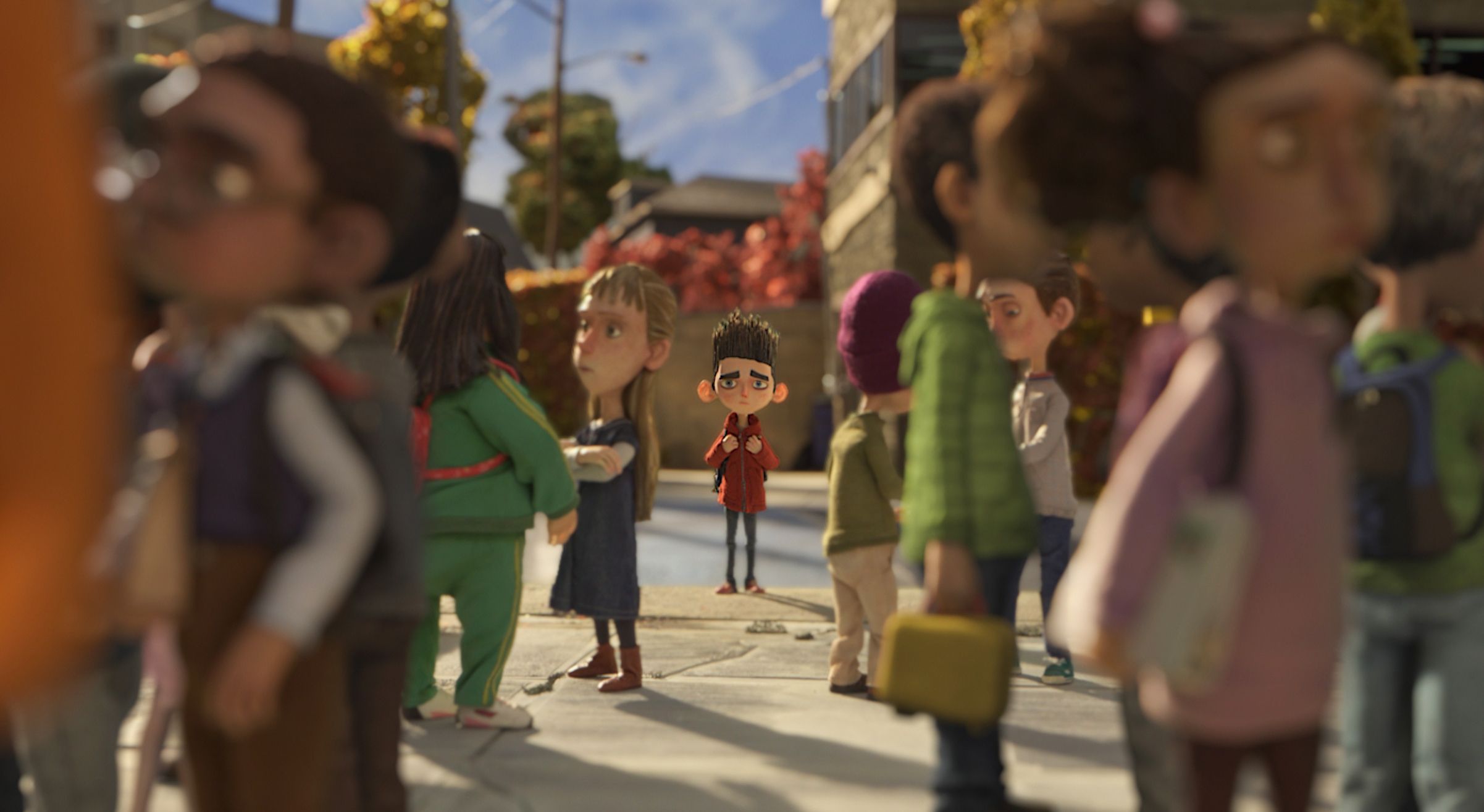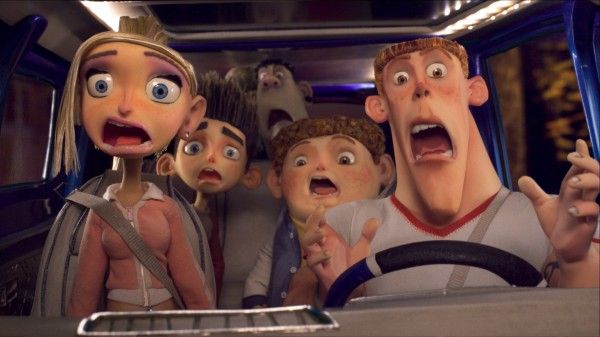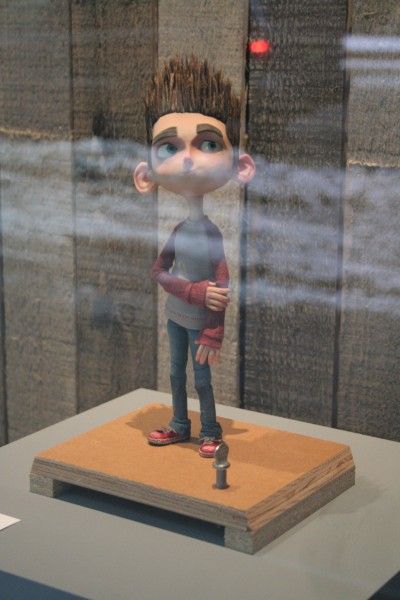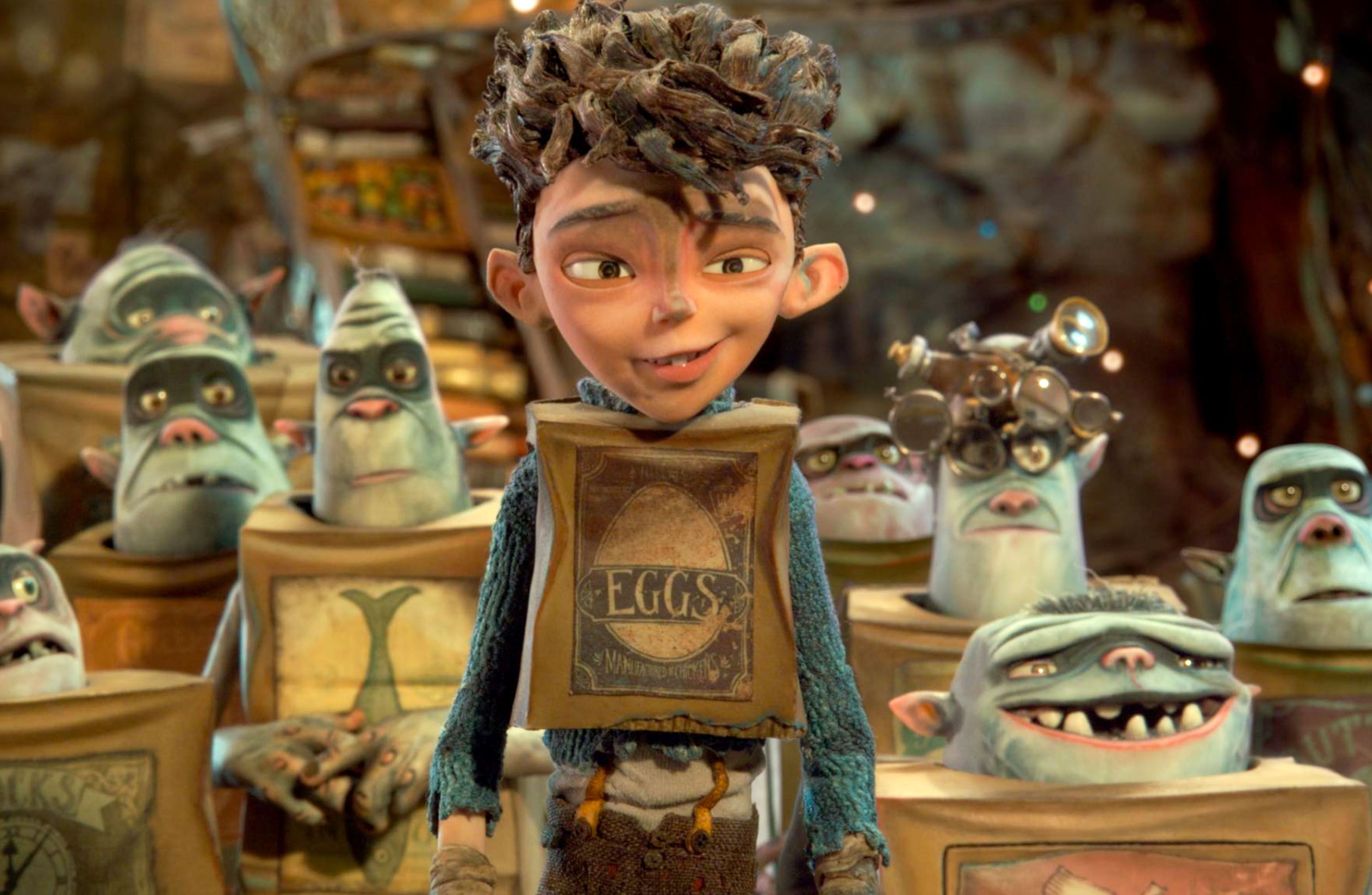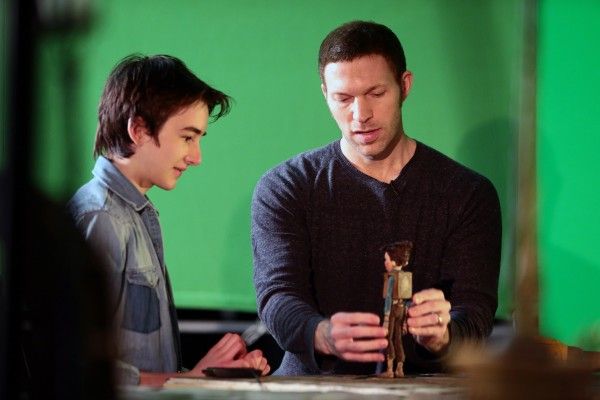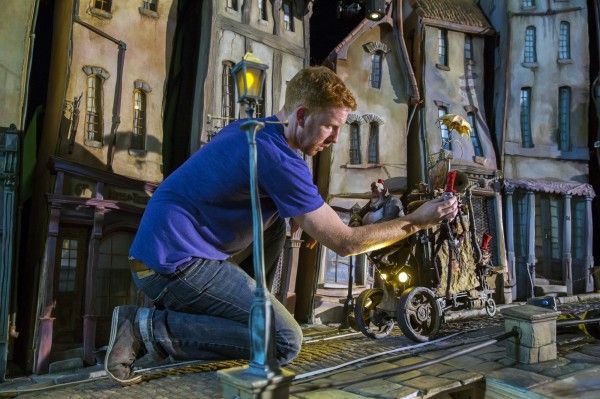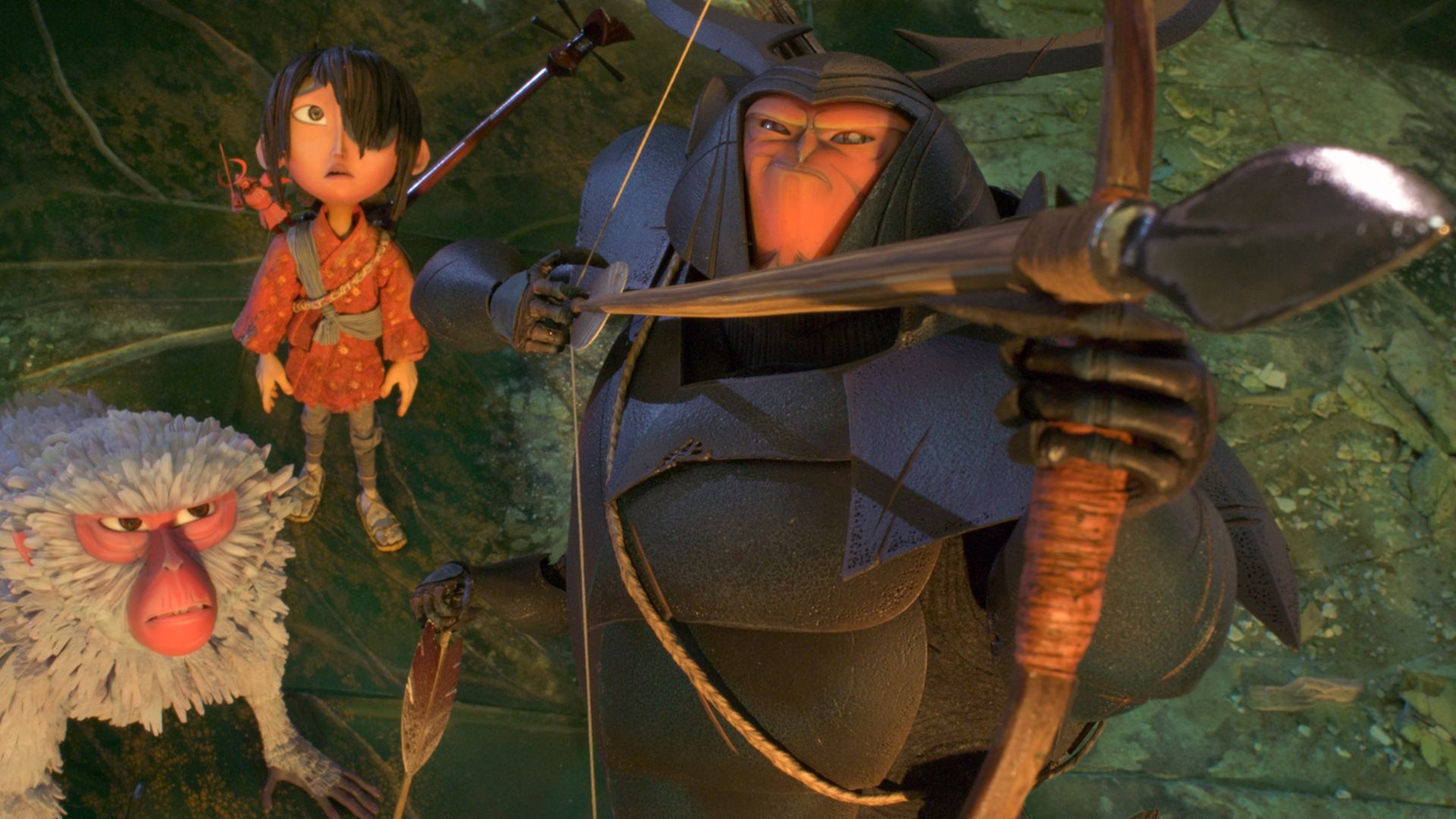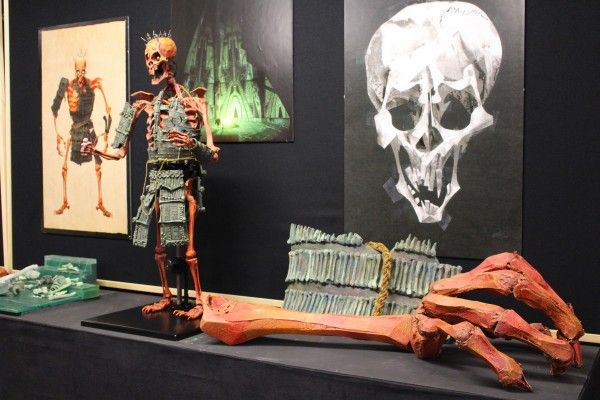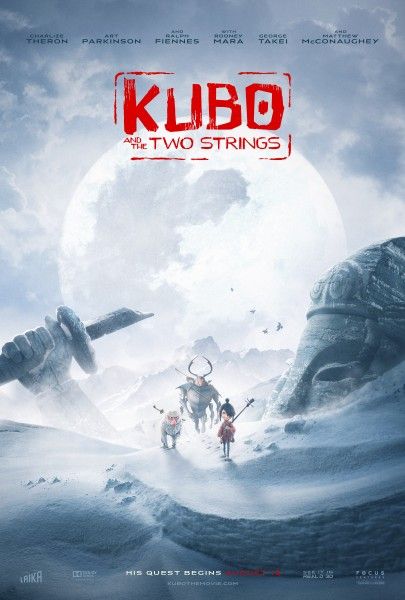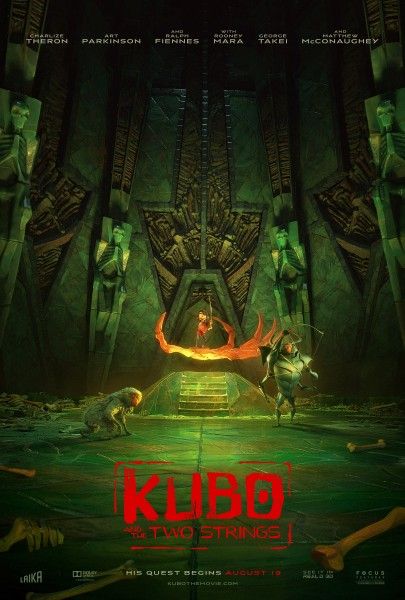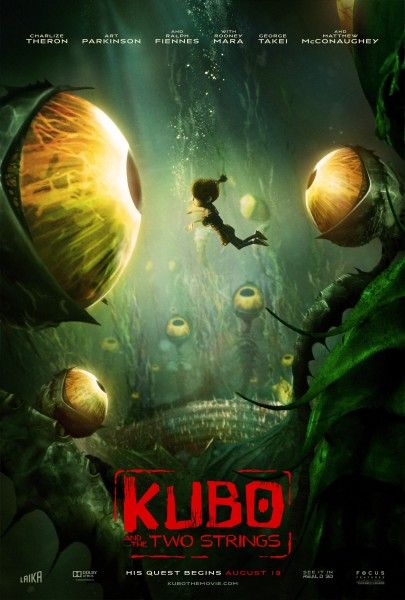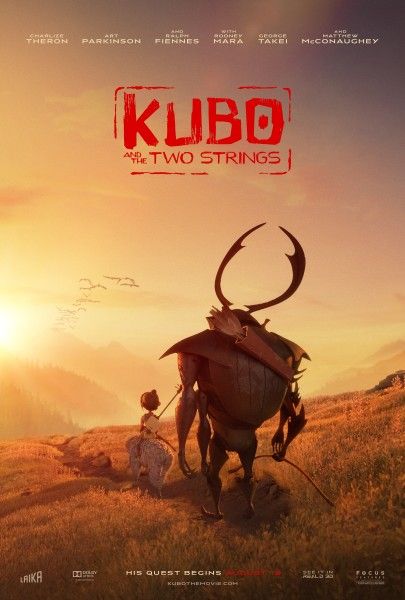Despite earning a Best Animated Film Oscar nomination for all their feature work--2009's Coraline, 2014's The Boxtrolls, and 2012's ParaNorman--stop-motion movie studio Laika Entertainment has yet to reach the recognition level or box office performance status of animation houses like Pixar, DreamWorks Animation, Sony Pictures Animation, or Walt Disney Animation. However, Laika does have their three original features in the top seven box office takes ever for stop-motion animated features. And with the studio's upcoming feature Kubo and the Two Strings poised to open in theaters on August 19th, there's every chance in the world LAIKA will have another $100 million earner and awards-contender on their hands.
But to fans of stop-motion animation--a charming and unique style of filmmaking of which Laika has fashioned itself after--box office numbers and awards hardware don't necessarily rank high on their metrics. What we look for is the clear presence of hands-on filmmaking, a moving story told in a way that only stop-motion animation can bring to life, and moments which have us asking, "How on Earth did they pull that off?" Through a combination of years of development, investment in advances in both 3D printing technology and computer-aided design, and a bold, ambitious approach to filmmaking, Laika has managed to reinvent themselves with each and every feature film they've released.
With that in mind, we take a look at the history of Laika Entertainment and their filmmaking evolution to see how far they've come and make a case for why their future is brighter than ever.
Coraline (2009)
Laika's first feature film in earnest is one that adapted Neil Gaiman's award-winning novella with writer-director Selick at the helm. Selick brought the adaptation to the studio after meeting with Gaiman; he also invited Japanese illustrator Tadahiro Uesugi to draw up some concept art for the film. This is all to say that attention to story, style, and design was clearly paramount for the new Laika feature from the get-go. The production studio stepped up in a big way on this one, keeping in mind everything they'd learned from previous films but also pushing the envelope along the way.
Now set up in Laika's home studio in Oregon, which would be home to the movie's three-year production journey to the screen, Coraline was shot in stereoscopic 3D, basically doubling the amount of shots needed with each snap taken from a slightly different angle; this was a first for a stop-motion animated feature. The 140,000-square-foot warehouse was divided up into 50 lots, encompassing 150 stages/sets, which included a miniature Victorian mansion (in triplicate to allow for multiple scenes to be animated simultaneously) and a 40-by-60-foot long apple orchard.
At any given time, 28 of the 35 employed animators were actively working, but the height of the production saw upwards of 450 people serving to bring all facets of Coraline to life. Some of those people, like Althea Crome, who spent her time knitting puppet-sized clothes with needles the width of a human hair for Deborah Cook's costume department, or Georgina Haynes who supervised puppet fabrication, painstakingly crafted everything you'll see on film. But to ramp up the production process with the aid of modern technology, the puppets themselves were largely 3D-printed.
Each character had multiple puppets--Coraline herself had 28 copies made--to allow for backups and for multiple scenes being animated at the same time; this came along with interchangeable hands, heads, and faces as well. The puppets' heads had separate upper and lower halves allowing for varying facial expressions that added up to over 200,000 possible combinations. While the seam between these two parts and the puppets' rigs were blended away with the use of the computer, which also added scant computer-generated effects and other adjustments, the overwhelming majority of what you see on screen was put there by the hands of animators and craftspeople.
But as both stop-motion animation techniques and computer technology continued to improve over the years, the line between puppets and pixels began to blur even more.
ParaNorman (2012)
ParaNorman provided a number of firsts for Laika. Though Coraline was their first full in-house production for the studio, ParaNorman was the first film that was based on an original story, one cooked up by co-director and writer Chris Butler. And though ParaNorman was the second stop-motion film to be shot in 3D--after the aforementioned Coraline--it was the first to use a 3D color printer for the puppets' faces, reducing the inconsistency of, and labor-intensive need for, hand-painted expressions.
Production was once again housed in Laika's Oregon-based studio, now encompassing 151,000 square feet, and took three years from script to screen. Two of those years were spent in the animation phase, a process which used more than 60 Canon 5d Mark II cameras to capture more than 400,000 frames of animation. The lightweight cameras with interchangeable lenses were perfectly suited for the production's five teams and 50 units, providing a great deal of flexibility. And while the budget and the workforce for ParaNorman was similar to to that of Coraline, it was the advances in 3D-printing technology that really let the ambitious film--and the equally ambitious filmmakers--push the stop-motion envelope.
The 178 puppets and their nearly foot-tall metal armature skeletons created for the 92-minute long family friendly movie were mostly based on tried-and-true stop-motion animation methods: paddles and gears beneath silicon skin, which allows for more precise animation than clay-based coverings, brought the undead puppet zombies to life, so to speak. But the main human characters required something more. After a $110,000 investment in a PolyJet plastic 3D printer and some initial experimentation on Coraline, Laika's rapid-prototyping process had been streamlined to an unprecedented degree. To put it into perspective, Jack Skellington from The Nightmare Before Christmas had a range of facial expressions topping out at about 800, Coraline's title character had 200,000; ParaNorman's titular hero boasted 1.5 million unique faces.
Part of this advance was due to a pair of 3D-printing technologies used in concert. The PolyJet printer works like an inkjet printer, laying down layer upon layer of super-thin monochromatic resin, cured by built-in UV lights, until a fully three-dimensional shape is completed. The second printer, a ZPrinter 650 from 3D Systems, supplied the critical missing element: color. Using Photoshop to pre-paint the two-dimensional models, the computer/printer combo not only ensured consistent skin tones and other colorations across the many, many faces, it also drastically cut down on the amount of time craftspeople would have to spend hand-painting the puppets. This printer worked by spraying different colored glue into a reservoir of fine powder, resulting in a colored 3D product that could be simply plucked out of the unhardened powder surrounding it.
There's still a hands-on process required for these new faces, however, including a team of four who gently sand the powder faces, and then harden them and make their colors more vibrant thanks to a dip in superglue, and then catalog them in an extensive library containing upwards of 30,000 faces. This catalog of facial displays--smiles, frowns, winks, etc.--allows the animators to select which kits are most suited to their particular scene, making for a refined, efficient process. The refinement was continued with the use of computers and digital animation techniques that would smooth transitions and clean up any remnants of the practical puppetry process.
ParaNorman saw the traditional and cutting-edge technologies of stop-motion filmmaking merge more closely than ever; The Boxtrolls would make them nearly indistinguishable.
The Boxtrolls (2014)
Laika's third feature film, The Boxtrolls, once again opted to adapt a previously existing work. This time, the source material was Alan Snow's "Here Be Monsters!" a sprawling tome of "magic, trolls, and other creatures," some of which included the title critters in Laika's adaptation. This was also the feature that granted me the opportunity to pay a visit to Laika Studios in Oregon and get an up-close-and-personal look at the stop-motion picture in progress.
Perhaps the details of Laika's filmmaking journey were best summed up by producer David Ichioka, who walked us through The Boxtrolls by the numbers and recounted the extensive writing process that whittled Snow's book down to a manageable size. In keeping with our look at Laika's evolution, in part, through the numbers, here are some of the more striking statistics for The Boxtrolls:
- Only 30 of the 330 of Laika’s in-house crew were animators. The production started with only two animators and maxed out at 30 simultaneous animators for only about a month before tapering back down.
- The production period totaled 72 weeks.
- Each animator was responsible for four seconds of animation a week. Each second of animation was composed of 24 still frames.
- All three films have been done at the 5:1 scale.
- The waltz sequence had 60+ dancers with another 20 – 30 characters in the hall.
- The VFX department averages 1,300 shots for stop-motion films. 100% of the shots come through their department, if only for basic cosmetic touches, color correction, and stereo balancing
-
At the height of production there were 52 animation units running; 40 is closer to the average.
- The fabrication team was composed of 65 to 70 artists and craftspeople, who took three to six months to create a puppet, depending on the complexity. Snatcher’s first puppet took six months; background characters take about three months. There were duplicates of every puppet, including 25 Eggs puppets, 15 Snatchers, and 185 total puppets.
- The movie’s smallest costumes were for Eggs as a baby: the sweater, measuring 3.5” from cuff to cuff across the length of both arms and chest, and the baby socks measuring 5/8” long.
- More than 20,000 props were handmade for the movie
- 55 different sculpts of prop cheeses were created for The Boxtrolls
- The movie’s smallest prop was a tiny sewing thread and needle.
As impressive and mind-boggling as those numbers are, the meeting point between practical stop-motion animation and computer-aided effects came ever nearer in The Boxtrolls. For example, one of Laika’s texture painters, Tory Bryant, used her traditional painting techniques to tweak the painting software into layering the available colors in order to produce blended finished pieces that were far beyond what the printer designers thought the software and their machines could do.
The VFX department's responsibilities included expanding the world of the movie and populating it with more characters than would be feasible with practical puppets; scanning puppets in stop-motion animation to be able to mimic their unique movements and incorporate digital effects; matching practical puppets, costumes, and designs exactly, down to the hair and fabric; adding digital smoke, sparks, skies, and atmospheric elements; and blending separate scenes together in sequence.
Laika’s plan going forward is for more “hybrid” movies like The Boxtrolls, with the possibility of hero characters being computer-generated in the future, depending on their size and other limitations. That being said, the charm of stop-motion animation lies in the practical elements of the unique style of filmmaking, so there will always be a focus on the practical side of things, like mimicking reflections of light off the surface of the water by using rotating panes of ripple glass, using LED lights in the eyes of certain puppets, or crafting overly complicated mechanical mechanisms like the Mecha-Drill. Otherwise, Laika would just be another computer animation studio; as their upcoming feature promises, they have no intention of going that route.
Kubo and the Two Strings (2016)
Laika returns to the realm of original features with Kubo and the Two Strings. Based on an original idea from Laika's character designer Shannon Tindle, the kernel of an idea that began as a stop-motion samurai film eventually grew into this epic, sweeping tale of magic and mythology, fostered by screenwriters Marc Haimes and Chris Butler, and shepherded by Travis Knight in the director's chair.
Longtime animator and CEO of Laika, Knight makes his directorial debut on Kubo and the Two Strings, obviously a first for him and yet another first for the production studio overall. In an exclusive interview with Collider Video's Perri Nemiroff, Knight talks about his debut, his inspiration from his childhood, and what makes Kubo special for him. It's a great look at the heart and emotional investment that goes into these movies, rather than a by-the-numbers approach.
While the studio's square footage, budget, staff size, and number of animators has stayed fairly steady over the course of their filmography, the scale of the story Laika is trying to tell seems to grow with each passing feature. Kubo and the Two Strings is no exception, featuring what's easily the studio's most ambitious cinematic world yet. But despite the epic nature of the adventure story, which sees the title character venturing across the landscape with his allies in search of a magical item, the real focus of the tale is a deeply human and personal story, one concerning Kubo's family and friends.
That's not to say they're slacking on pushing the practical puppet envelope on Kubo. In fact, it features the studio's biggest creation yet, one that stands 16 feet tall, with a wingspan from tip to tip that reaches 23 feet, and that weighs in at 400lbs. The animators basically needed the mechanism of a flight simulator to get the thing to animate properly. That alone should be worth the price of admission to see, especially now that you have a better grasp of just how much work goes into making each of these awards-worthy pictures.
At the moment, Laika's history of evolving stop-motion animation techniques will culminate with Kubo and the Two Strings. It will most certainly be every bit as impressive and timeless as its predecessors, but like all things, it will be followed by another film in the years to come that aims to improve upon the process yet again. With Laika aiming to produce one film a year--an insane pace for the studio that has churned out four movies in the past seven years--hopefully the more regular schedule will lead to increasing recognition for the studio and its charmingly unique films, without a dip in quality or heavier lean on computer-generated support. For my money, as long as Laika gets to keep making films for years and years to come, everybody wins.
For more on Kubo, take a look at the following links before you check out the film on August 19th:
- ‘Kubo and the Two Strings’ Director, Matthew McConaughey, and Charlize Theron on Laika’s Latest
- Watch a Great Cover of “While My Guitar Gently Weeps” for ‘Kubo and the Two Strings’
- 100+ Images Transport You from ‘Coraline’ to ‘Kubo’ at Universal Studios Magical LAIKA Experience
- Explore the Gorgeous World of ‘Kubo and the Two Strings’ in a New Interactive Featurette
- Watch How ‘Kubo and the Two Strings’ Became a “Stop-Motion Samurai Film”

